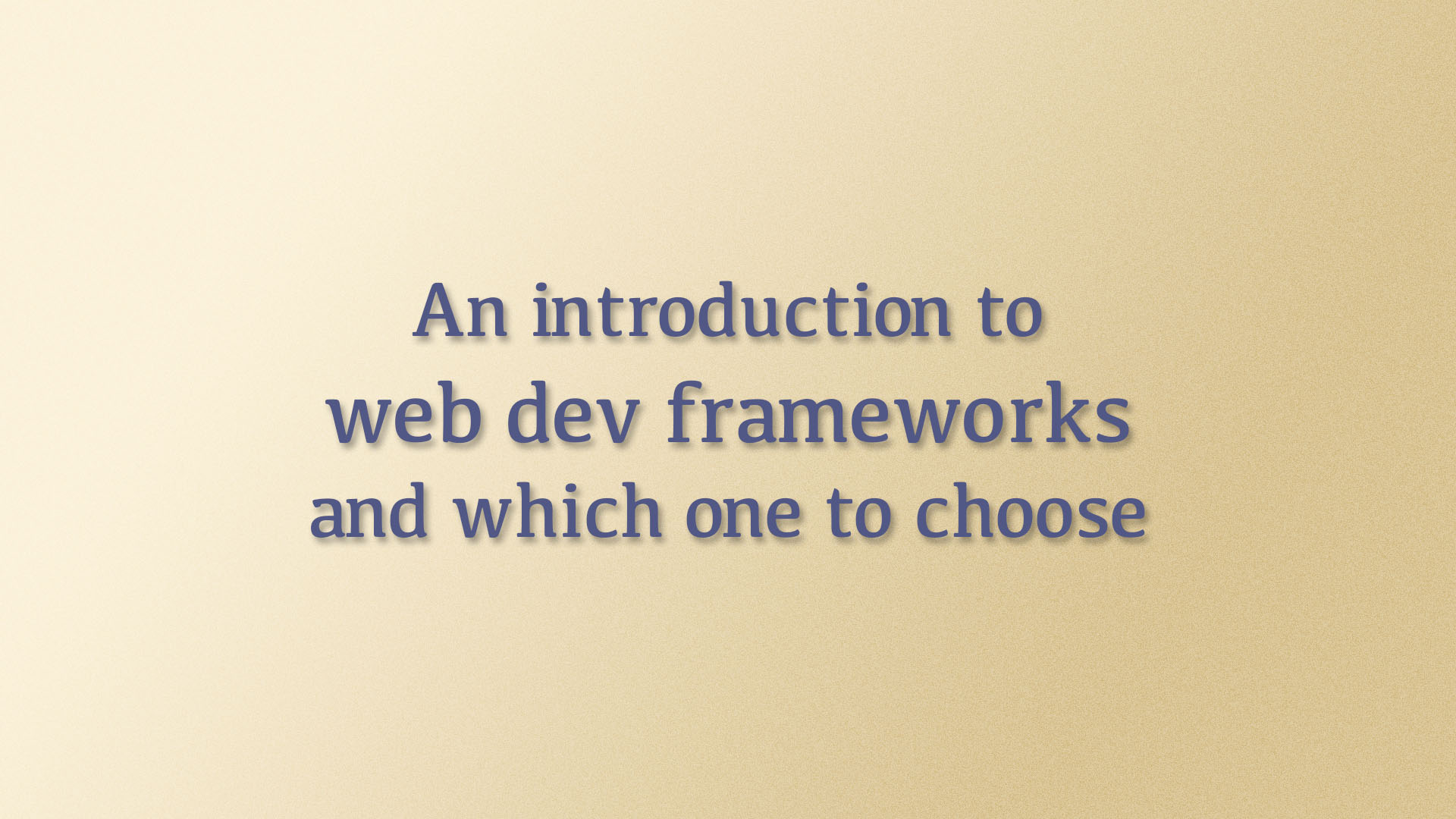An introduction to web development frameworks and which one to choose

Web development frameworks are a set of tools and libraries that simplify and speed up the process of building web applications. They provide a structure and pre-written code that developers can use to create web applications more quickly and efficiently. With the growing popularity of web applications, there are many web development frameworks available, each with its unique features, benefits, and drawbacks. In this post, we will introduce you to the concept of web development frameworks, discuss the key factors to consider when choosing a web development framework, and compare popular web development frameworks to help you decide which one is best for your project.
What is a Web Development Framework?
A web development framework is a collection of tools, libraries, and pre-written code that provide a structure for developing web applications. They offer a way to build applications quickly and efficiently by handling repetitive tasks, such as handling requests and responses, rendering HTML and CSS, and communicating with databases. Web development frameworks also offer a way to structure code, making it easier to maintain and update web applications over time. By using a web development framework, developers can focus on building the unique features of their application rather than worrying about lower-level details.
The benefits of using a web development framework include faster development times, improved code quality, increased maintainability, and easier collaboration between team members. Web development frameworks provide a common language and a set of standards that developers can use to communicate, ensuring that everyone is on the same page.
Factors to Consider When Choosing a Web Development Framework
When choosing a web development framework, it’s important to consider several factors to ensure that you choose the right one for your project. Here are some of the key factors to consider:
Project scope
The size and complexity of your project will influence which web development framework is best for you. A small project with simple requirements may be better suited to a lightweight framework, while a large project with complex requirements may require a more robust framework.
Development team size and skill level
Consider the size of your development team and the level of experience they have with web development frameworks. If you have a small team with limited experience, a simpler framework may be more appropriate. If you have a large team with a range of experience levels, a more robust framework may be necessary.
Scalability
Consider whether the framework you choose will be able to handle the growth of your project over time. If you anticipate that your project will need to scale up quickly, you may need to choose a framework that is designed to handle large volumes of traffic and data.
Technology stack
Consider the other technologies and tools that you will be using alongside your web development framework. For example, if you are building a web application that needs to integrate with other software systems, you will need to choose a web development framework that is compatible with those systems.
Community and support
Consider the size and activity of the developer community around the framework you are considering. A large and active community can provide support, documentation, and resources to help you get up and running quickly and resolve issues as they arise.
Popular Web Development Frameworks
Here are some of the most popular web development frameworks available:
Angular
Angular is a JavaScript-based framework developed by Google. It provides a comprehensive set of tools for building web applications, including data binding, dependency injection, and routing.
React
React is a JavaScript library developed by Facebook. It is used to build user interfaces and is often used in combination with other frameworks to build full web applications.
Vue.js
Vue.js is a lightweight JavaScript framework that provides a simple and easy-to-use approach to building web applications. It is often used for building single-page applications and is known for its ease of use and flexibility.
Django
Django is a Python-based framework that provides a high-level approach to web development. It is designed to be easy to use and includes a built-in admin interface, making it a good choice for creating content-driven websites.
Ruby on Rails
Ruby on Rails is a popular web development framework that is designed to make building web applications faster and easier. It provides a simple and intuitive approach to web development and includes a wide range of tools and libraries.
Flask
Flask is a lightweight Python web development framework that is easy to learn and use. It is often used for building small to medium-sized web applications and is known for its flexibility and simplicity.
Conclusion
Web development frameworks provide a powerful set of tools and libraries that simplify the process of building web applications. When choosing a web development framework, it’s important to consider the scope of your project, the size and skill level of your development team, scalability, the technology stack, and community and support. With so many web development frameworks available, it can be challenging to choose the right one. By considering these factors and comparing popular web development frameworks, you can find the one that is best suited to your project’s needs.